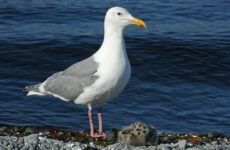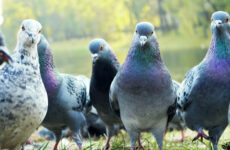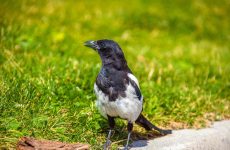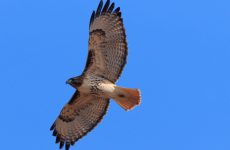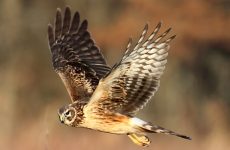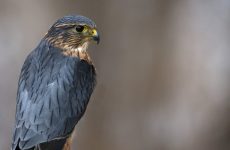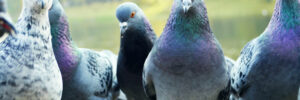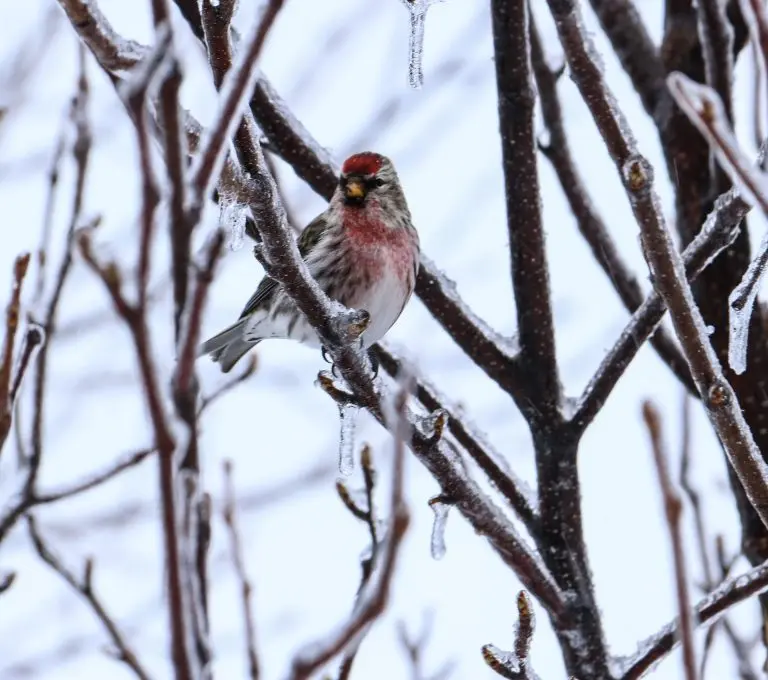
These are the 12 species of red birds in Michigan that you can spot in your backyard or when out birding.
Some of them you may be familiar with such as a Northern Cardinal but some of these red birds are not often spotted in Michigan and so you may have a rare find.
Red birds visit Michigan at different times of the year and some may breed in the state and some stay for winter.
I have gathered all the information you need to know such as when these red birds are in Michigan, what they look like and where they are commonly seen.
Finches and Tanagers are often red birds that you can spot but there are several different species to learn.
So take a look and find the birds you are looking for.
Northern Cardinal
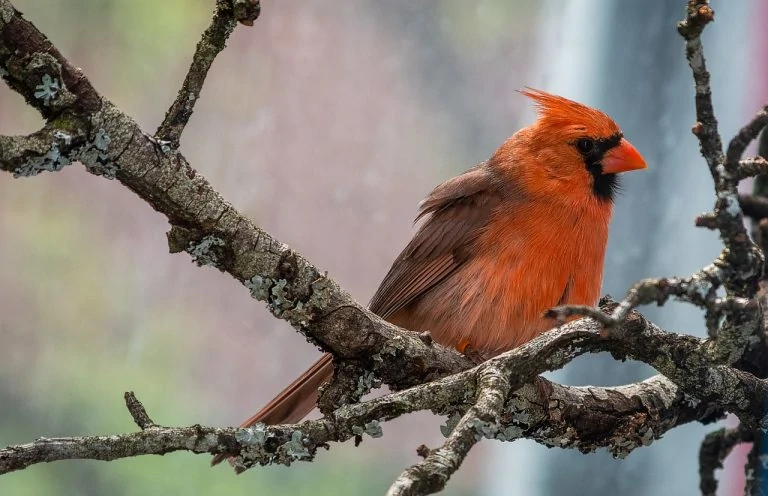
Northern Cardinals are very common red birds of Michigan throughout the year.
The bright red male Northern Cardinal is a bird with a red head, body and tail, with black around their faces. They are a great sight, especially against a white winter background. The females are also a little showy with their brown coloring, sharp brown crest, red highlights, and red beaks.
- Length: 8.3-9.1 in (21-23 cm)
- Weight: 1.5-1.7 oz (42-48 g)
- Wingspan: 9.8-12.2 in (25-31 cm)
Northern Cardinals are found in eastern and southern states and will sometimes attack their own reflection during breeding season as they obsessively defend their territories.
You can attract more Northern Cardinals to backyard feeders with sunflower seeds, peanut hearts, millet, and milo.
They will feed on large tube feeders, hoppers, platform feeders, or food scattered on the ground.
Purple Finch
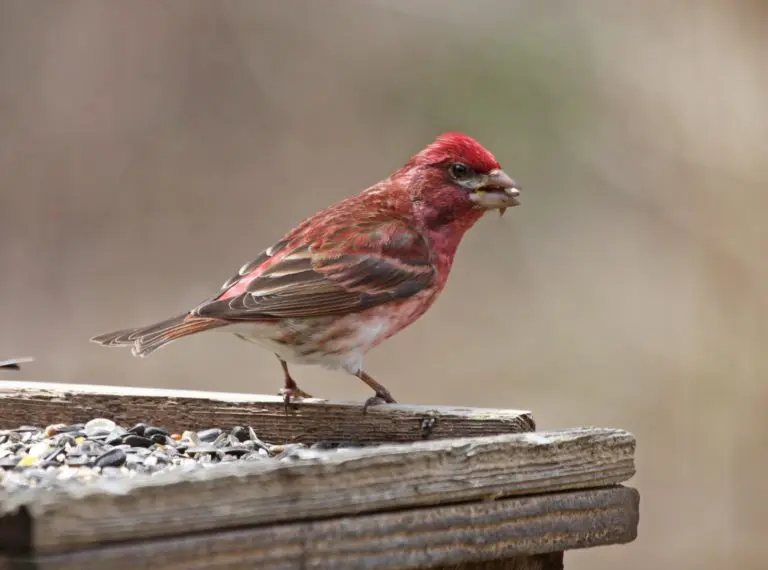
Purple Finch are common red birds in Michigan throughout the year. they are more common in the north of the state.
Purple Finch look very similar to House Finch with the reddish-purple head and breast with more brown on the back and wings.
- Length: 4.7-6.3 in (12-16 cm)
- Weight: 0.6-1.1 oz (18-32 g)
- Wingspan: 8.7-10.2 in (22-26 cm)
They breed in Canada and overwinter in eastern states but can be found all year in the north-east are Pacific coast.
They can be spotted in evergreen forests feeding on seeds but also buds, nectar and berries.
They readily come to feeders for black oil sunflower seeds.
House Finch
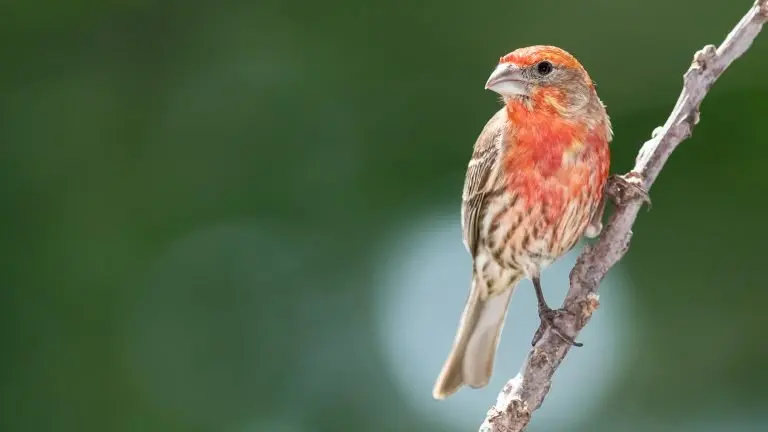
House Finch are common red birds of Michigan all year and they are more common in the south of Michigan but can be spotted throughout the state.
House Finches are another bird with a red head and breast in the males and brown-streaked coloring in the females.
- Length: 5.1-5.5 in (13-14 cm)
- Weight: 0.6-0.9 oz (16-27 g)
- Wingspan: 7.9-9.8 in (20-25 cm)
Originally only in western states it was introduced to the eastern states and has done very well, even pushing out the Purple Finch.
They can be found in parks, farms, forest edges, and backyard feeders. They can be found in noisy groups that are hard to miss.
You can attract more House Finches to backyard feeders with black oil sunflower seeds or nyjer seeds in tube feeders or platform feeders.
Common Redpoll

Common Redpoll are red birds that brighten up winter in Michigan. They can be spotted in the state from October until May.
Common Redpolls have red foreheads, pinky breasts, and are brown and white over the rest of their bodies.
- Acanthis flammea
- Length: 4.7-5.5 in (12-14 cm)
- Weight: 0.4-0.7 oz (11-20 g)
- Wingspan: 7.5-8.7 in (19-22 cm)
They can be found in winter in northern states and less frequently in central states.
In winter they will sometimes tunnel into the snow to stay warm during the night. They can eat up to 42% of their body mass every day and can store up to 2 grams of seeds in a stretchy park of their esophagus.
They can be found in weedy fields or feeding on catkins in trees but they will also come to feeders for small seeds such as nyjer seeds or thistle.
Vermillion Flycatcher
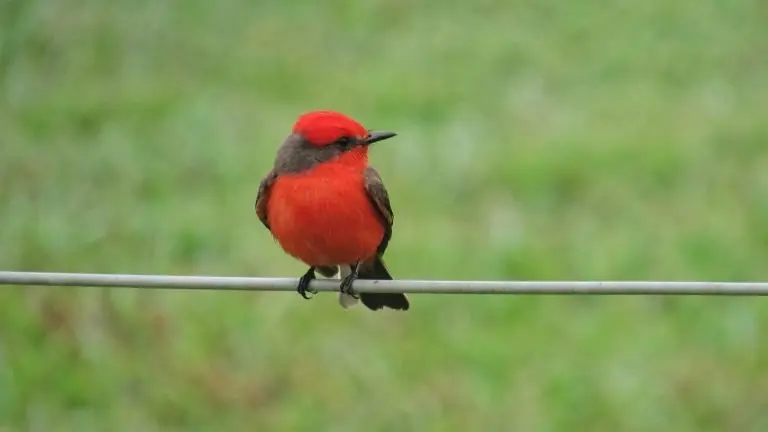
Vermilion Flycatchers are rare red birds in Michigan but they have been spotted a few times near the lakes.
Vermilion Flycatchers are bright red birds from the front and brown on the back. with a brown mask across the face. Females are gray and brown with a pale reddish belly.
- Pyrocephalus rubinus
- Length: 4.8-5.4 in (12.3-13.8 cm)
- Weight: 0.4-0.5 oz (11.3-14.8 g)
They can be found all year in the far south in desert landscapes catching insects or sitting on exposed perches.
They are fairly common in the southwest but also along the Gulf Coast in smaller numbers.
Scarlet Tanager
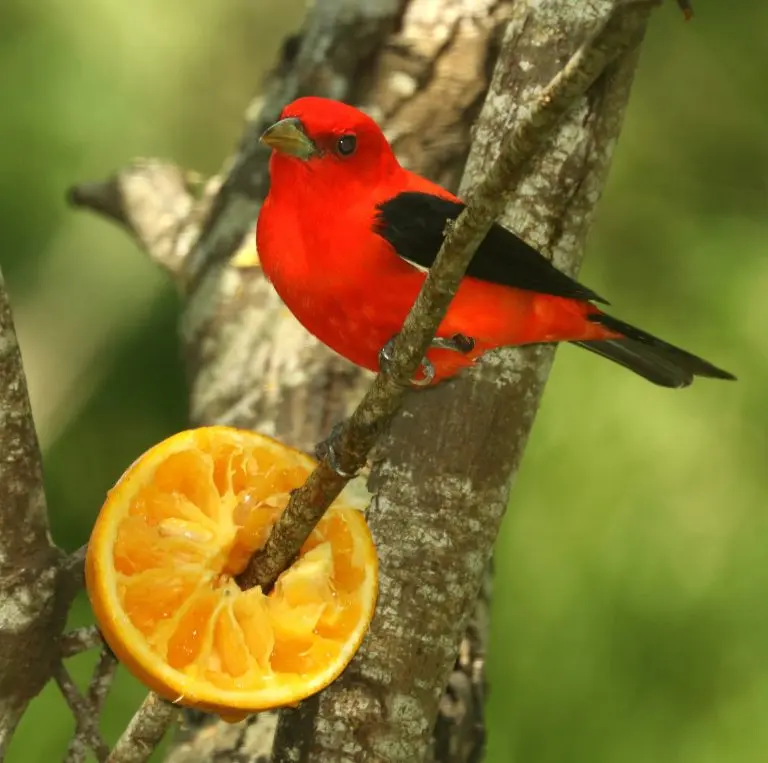
Scarlet Tanagers are red birds of Michigan in summer. They can be spotted throughout Michigan between May and October.
Scarlet Tanagers are bright red birds with black wings and tails. Females are yellow with darker wings and tails.
- Piranga olivacea
- Length: 6.3-6.7 in (16-17 cm)
- Weight: 0.8-1.3 oz (23-38 g)
- Wingspan: 9.8-11.4 in (25-29 cm)
They breed in eastern forests in summer before migrating to South America.
Scarlet Tanagers can be hard to spot as they stay high in the forest canopy.
You can attract more Scarlet Tanagers by planting berry plants such as blackberries, raspberries, huckleberries, juneberries, serviceberries, mulberries, strawberries and chokeberries.
Summer Tanager
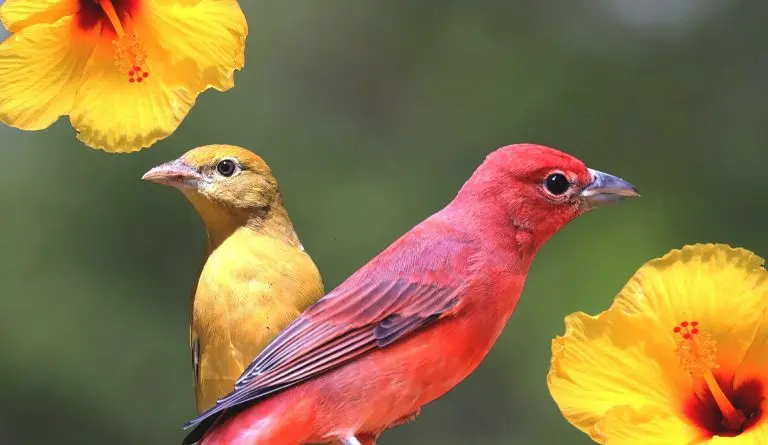
Summer Tanagers are rare in Michigan but they can be spotted, more commonly along the coast and in the south of the state in summer.
Summer Tanager males are bright red birds and females are yellow.
- Piranga rubra
- Length: 6.7 in (17 cm)
- Weight: 1.1 oz (30 g)
They breed in southern and eastern states before heading to Central and South America for winter.
They are forest songbirds and can be found in open woodlands and feed on bees and wasps in mid-flight. They catch them and kill them by beating them against a branch and rubs the stinger off before eating them.
You can attract more Summer Tanagers to your backyard with berry bushes and fruit trees.
Hepatic Tanager
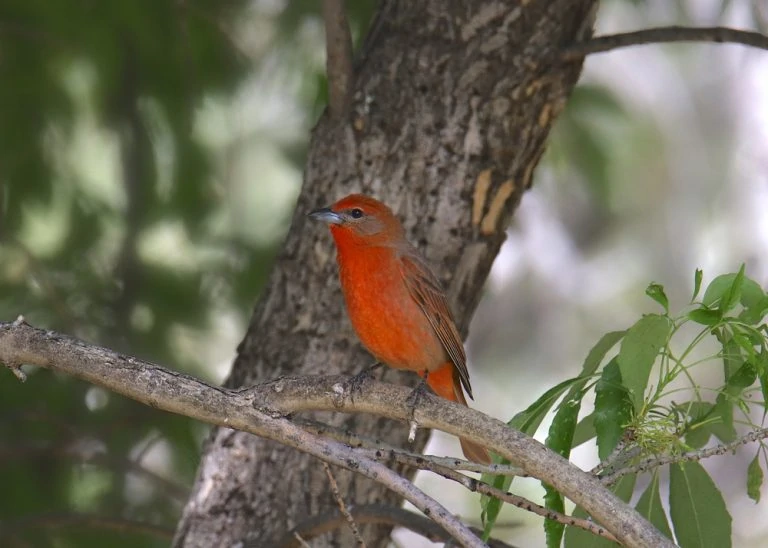
Hepatic Tanagers are very rare red birds in Michigan and they have only been spotted twice in the last 10 years as accidental winter visitors.
Hepatic Tanager males are red birds with some gray on the back. Females are yellow.
- Piranga flava
- Length: 3.5-7.9 in (8.8-20 cm)
- Weight: 0.8-1.7 oz (23-47 g)
- Wingspan: 12.6 in (32 cm)
Hepatic Tanagers breed in southwestern states and Mexico before spending the winter in Mexico, Central and South America.
They can be found in mountain ranges with pine or pine and oak woodlands and feed on insects and spiders. They will also eat some berries such as cherry and grapes.
Red Crossbill
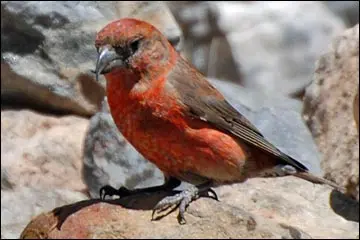
Red Crossbills can be found all year in Michigan but they are more common in the fall and early winter. They are more commonly spotted around Lake Superior.
Red Crossbill males are red birds with darker wings and tails. Females are yellow and brown.
They can be found year-round in northern and western states and in winter in eastern states.
They feed on conifer seeds and forage in flocks from tree to tree, even breaking unopened cones with their powerful beaks. As well as coniferous forests they can be found along roadsides consuming grit in the mornings.
White-winged Crossbill
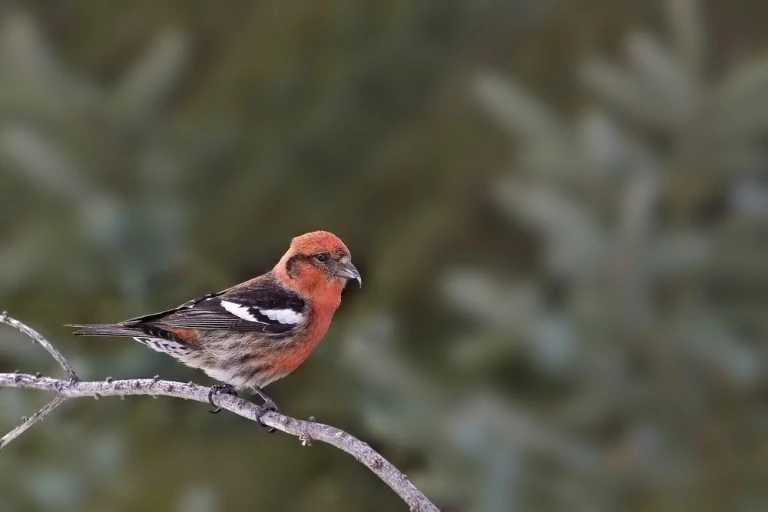
White-winged Crossbills are not very common red birds in Michigan. They can be found all year in Michigan but they are more commonly spotted in January and November.
White-winged Crossbills are finches with heavy crossed beaks. Males are red birds with black wings and tails and two white wingbars. Females are yellow and brown and with two white wing bars.
- Loxia leucoptera
- Length: 5.9-6.7 in (15-17 cm)
- Weight: 0.8-0.9 oz (24-26 g)
- Wingspan: 10.2-11.0 in (26-28 cm)
White-winged Crossbills live in forests in Canada, Alaska and sometimes northern US states when cone crops are poor further north. They can be found in spruce forests feeding on seeds.
Unusually these birds breed at any time of year as long as there is enough food.
They can often be heard in large flocks
Pine Grosbeak
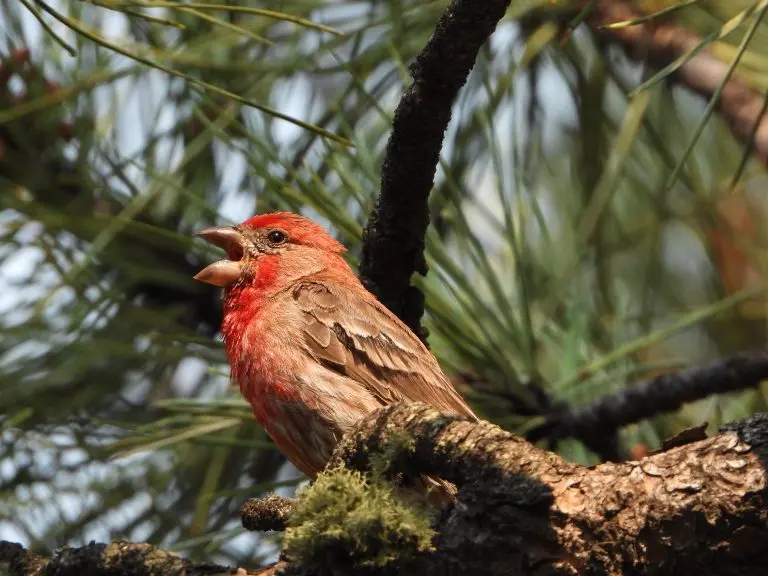
Pine Grosbeak are red birds of Michigan that, although not very common, can be spotted in winter in the state.
Pine Grosbeaks are a species of finch. The males are red birds with gray on the wings and tail and two white wingbars. Females are gray with dull orange heads and rumps. They are large for finches and relatively slow.
- Pinicola enucleator
- Length: 7.9-9.8 in (20-25 cm)
- Wingspan: 13.0 in (33 cm)
Pine Grosbeaks are mostly found in Canada but some can be spotted along the border or in the mountainous west and the Sierra Nevada in California.
They live in forests of pine, spruce and fir feeding on seeds, fruit and buds from these trees. They will also eat some insects in the summer.
You can attract Pine Grosbeaks to black oil sunflower seed feeders or suet feeders.
Painted Bunting
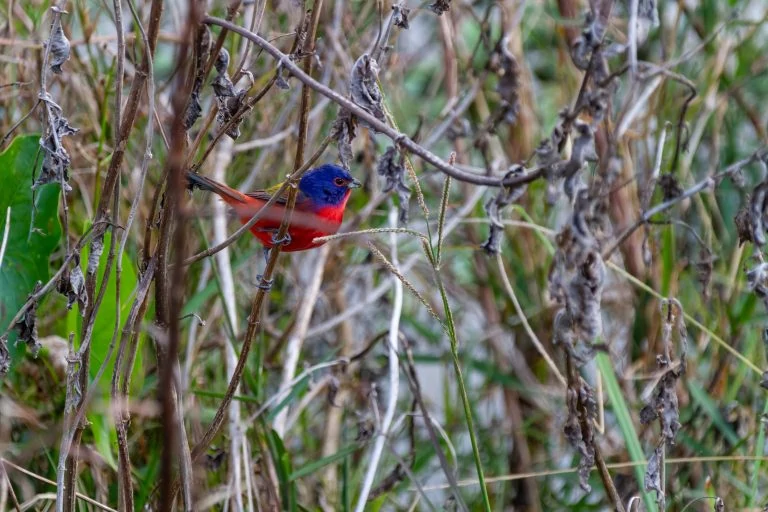
Painted Bunting are rare birds in Michigan but you may be lucky enough to spot these bright birds in spring or summer.
Painted Bunting males are a brightly colored patchwork of color with mostly red coloring underneath and with bright blue heads, green wings, and backs. Females are bright yellow-green.
- Passerina ciris
- Length: 4.7-5.1 in (12-13 cm)
- Weight: 0.5-0.7 oz (13-19 g)
Painted Bunting breed in a few states, in the south-central and along with some coastal areas in the Southeast U.S, before migrating at night to Central America, southern Florida, and some Caribbean islands.
You can find Painted Bunting in semi-open habitats foraging mostly for seeds but also insects in the breeding season.
To attract painted Bunting to your yard try adding low dense vegetation and feeders filled with seeds such as white millet or black oil sunflower seeds.

